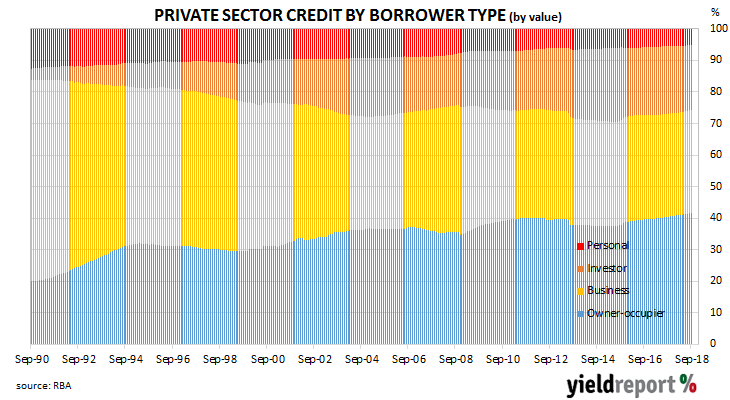The pace of lending to the non-bank private sector by financial institutions in Australia has been trending down since it peaked in October 2015. It stabilised in July and picked up a little in August but some economists expect the downward trend to continue as lending institutions tighten their standards and potential borrowers respond to perceptions of less attractive asset markets.
According to the latest RBA figures, private sector credit grew by 0.4% in September, down from the 0.5% growth rate in August but in line with the 0.4% consensus estimate. The year-to-September growth rate crept up for a second consecutive month from 4.5% to 4.6% on the back of increased lending to the business sector.
Westpac senior economist Andrew Hanlon said a month ago he did not expect the rebound to continue. He is still of that view. “Credit growth has been slowing as the housing sector cools in response to tighter lending conditions. However, in the September quarter, a burst of strength in the business segment provided some temporary respite.”
Historically, “owner-occupier” loans and, to a lesser extent, business loans have been the largest influences on total credit growth as they account for nearly 75% of outstanding loans.

The “owner-occupier” segment has been responsible in the past for the bulk of lending in dollar terms, but in September, the business segment took the lead, despite a fall in its monthly growth rate. According to Westpac’s Andrew Hanlon, if it were not for funding alternatives, lending to the business sector may well have grown by more. “Currently, business credit growth is undershooting growth in non-mining business investment, the reverse of the experience in recent years, suggesting a greater reliance by businesses on other sources of funding, including retained earnings.” Business credit growth fell back from a growth rate of +0.8% in August to +0.6% in September but its annual growth rate accelerated from 3.8% to 4.4%.

